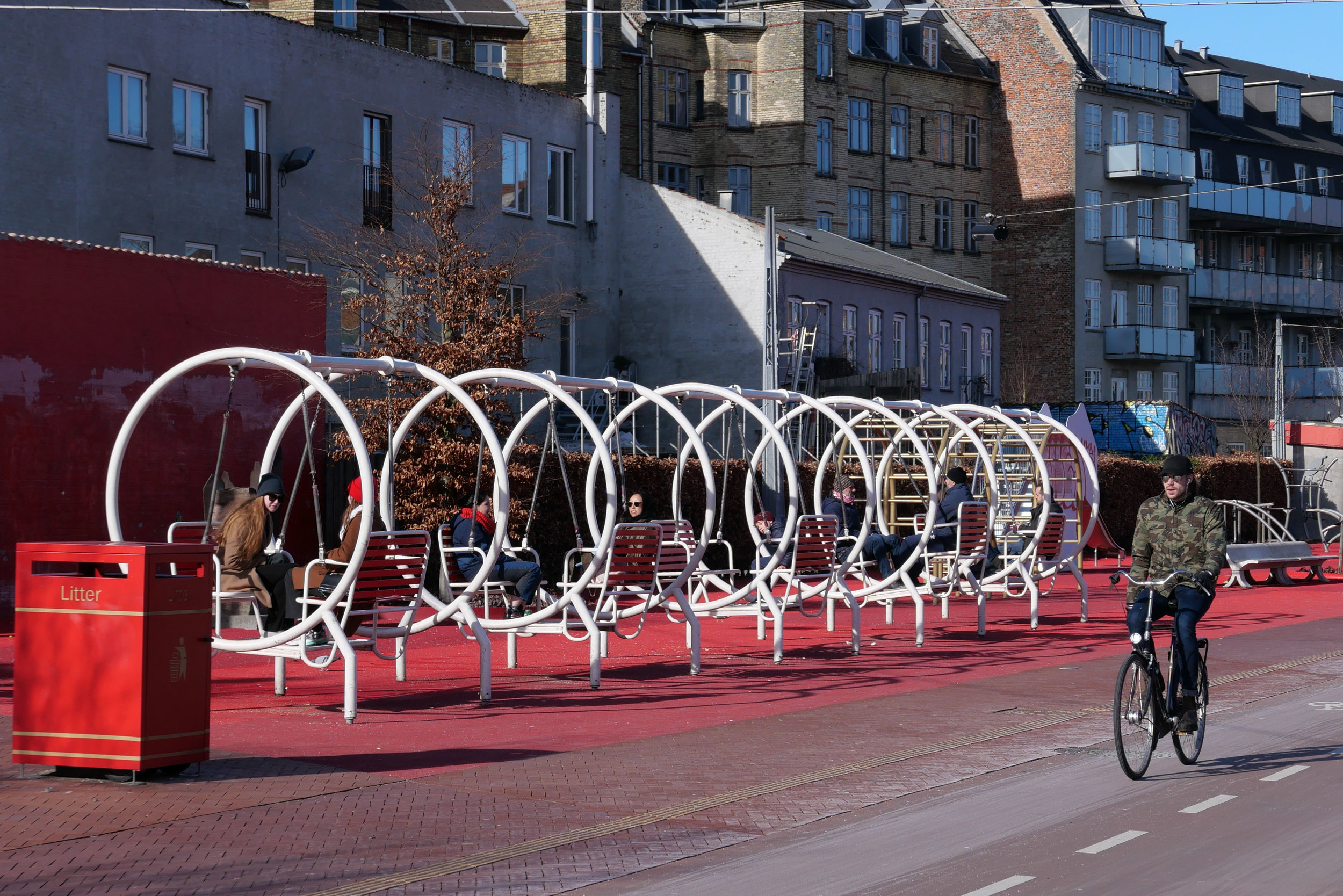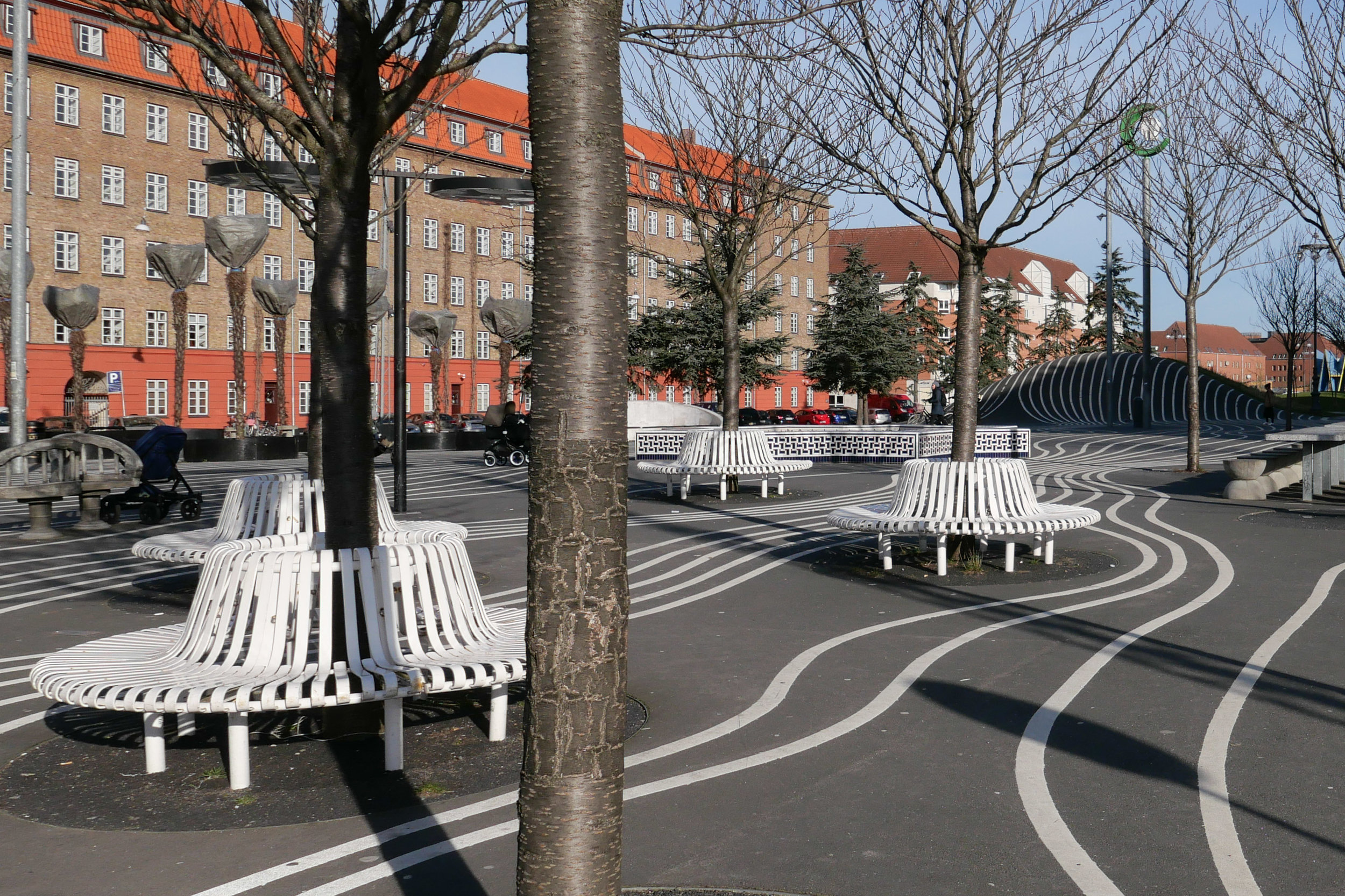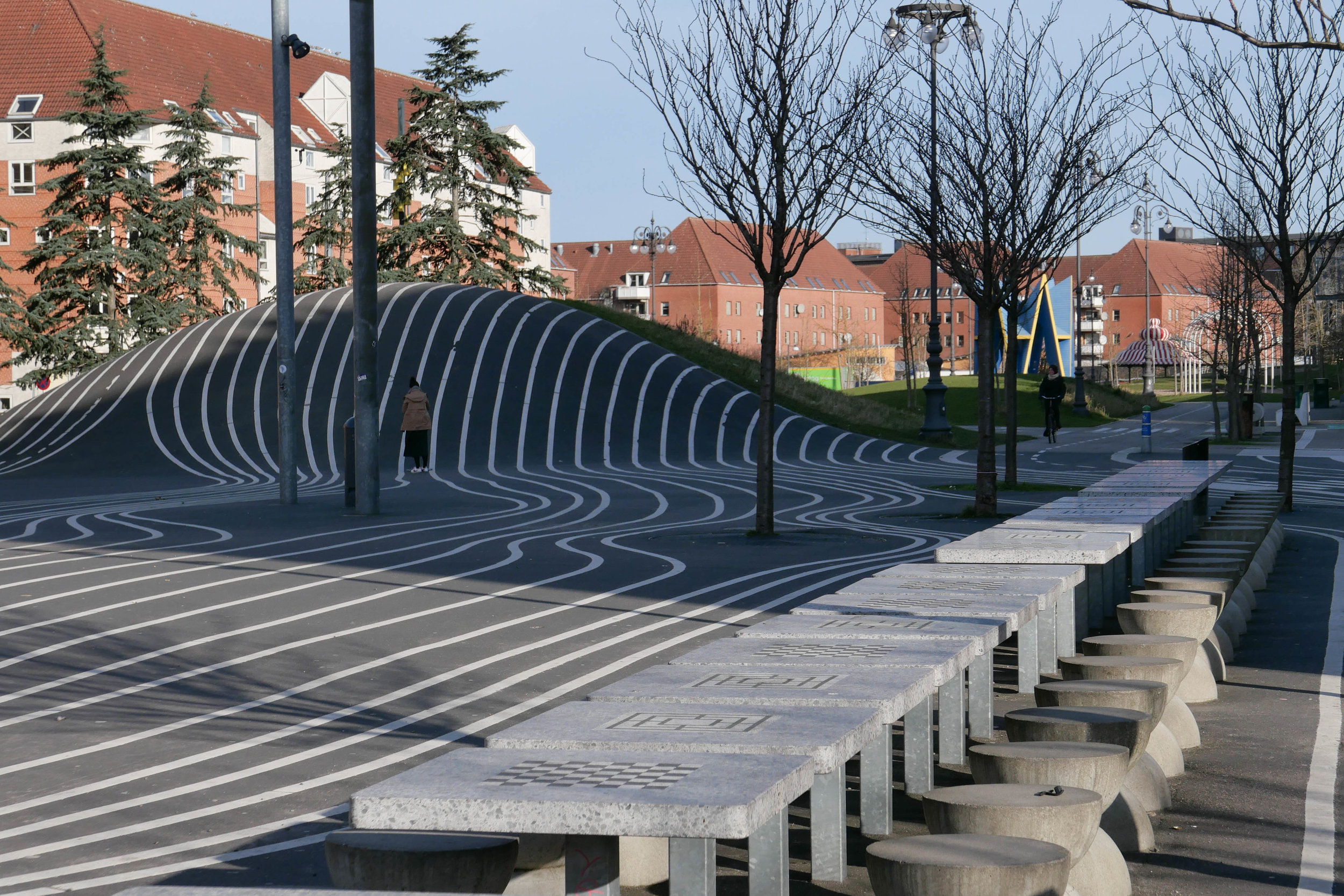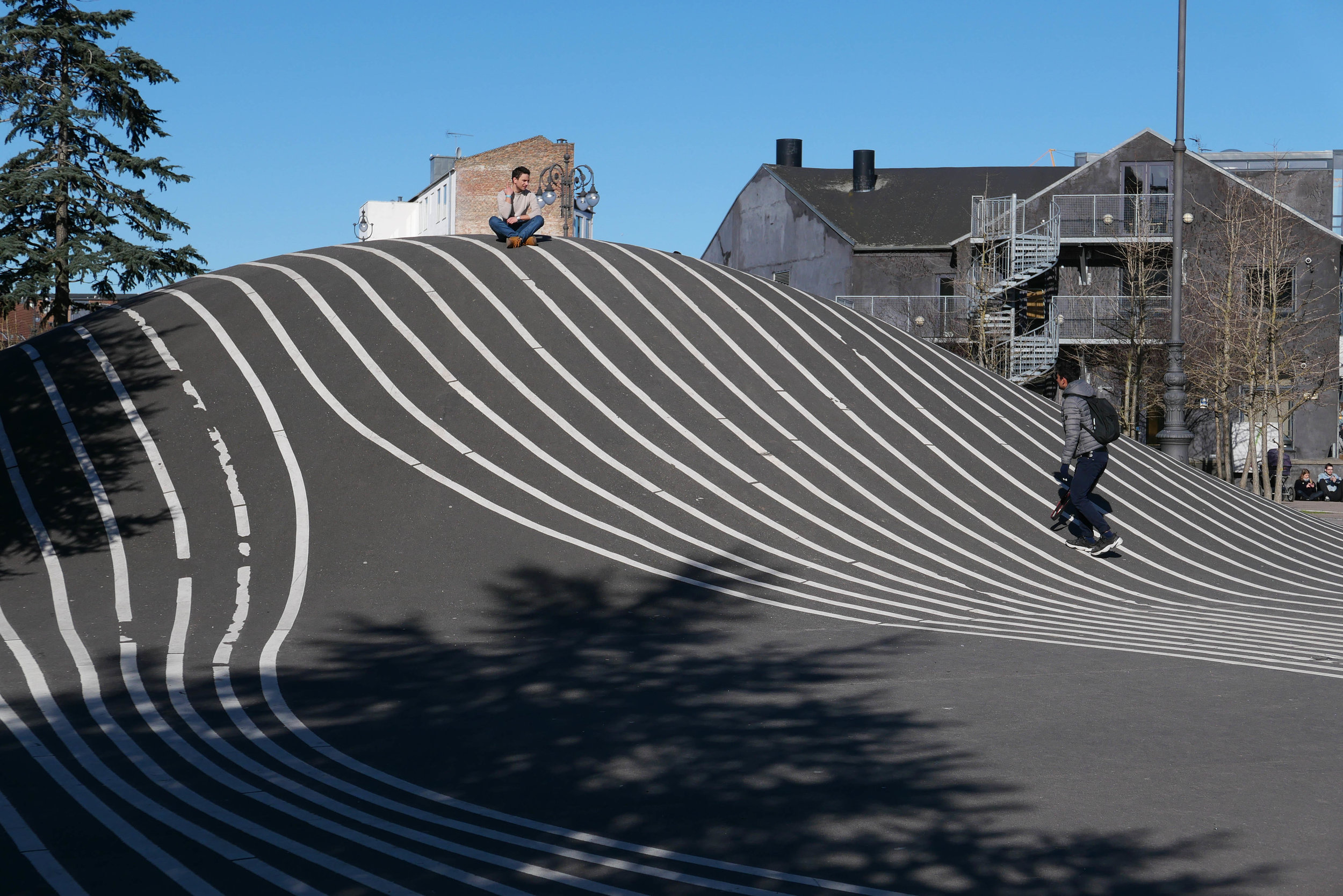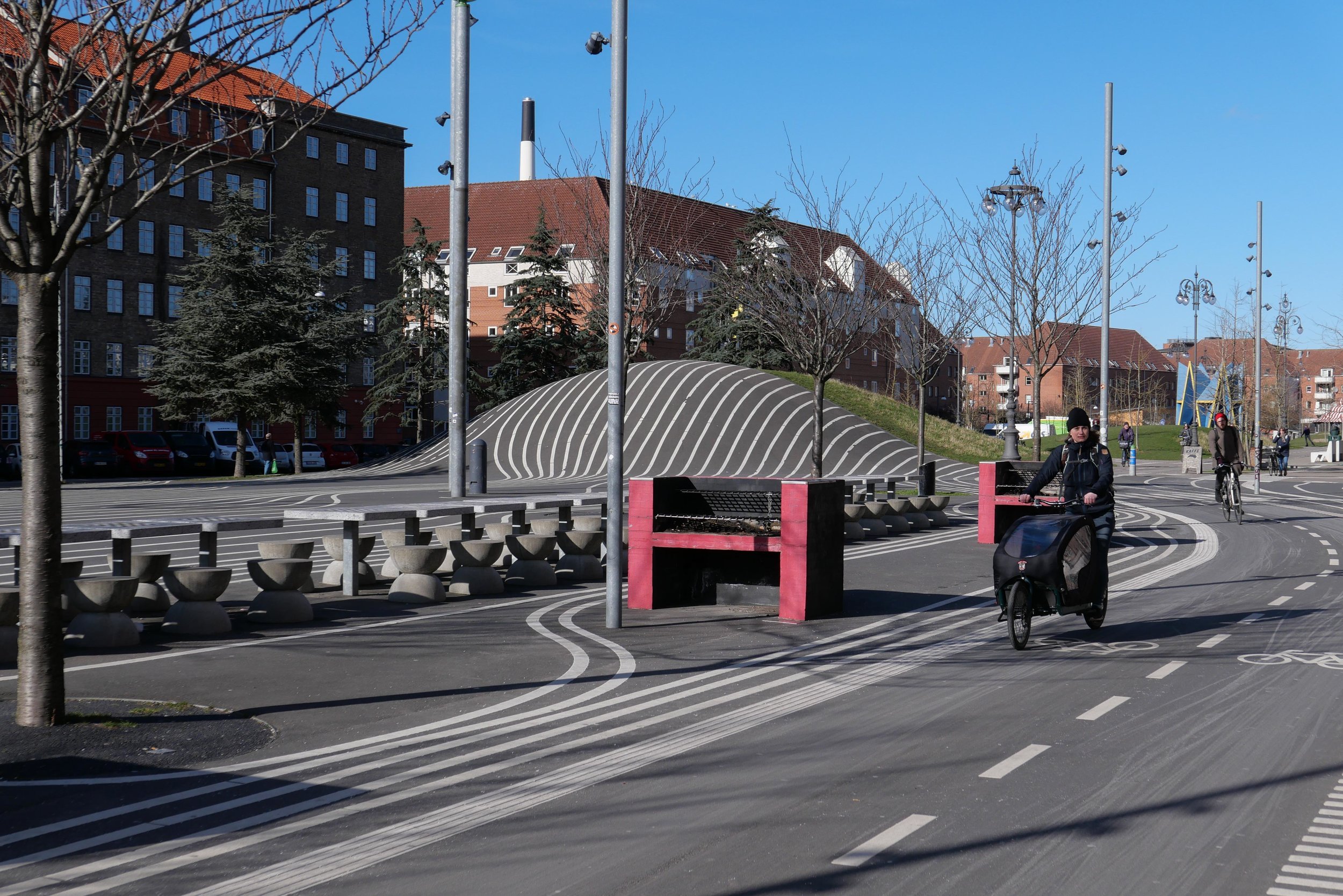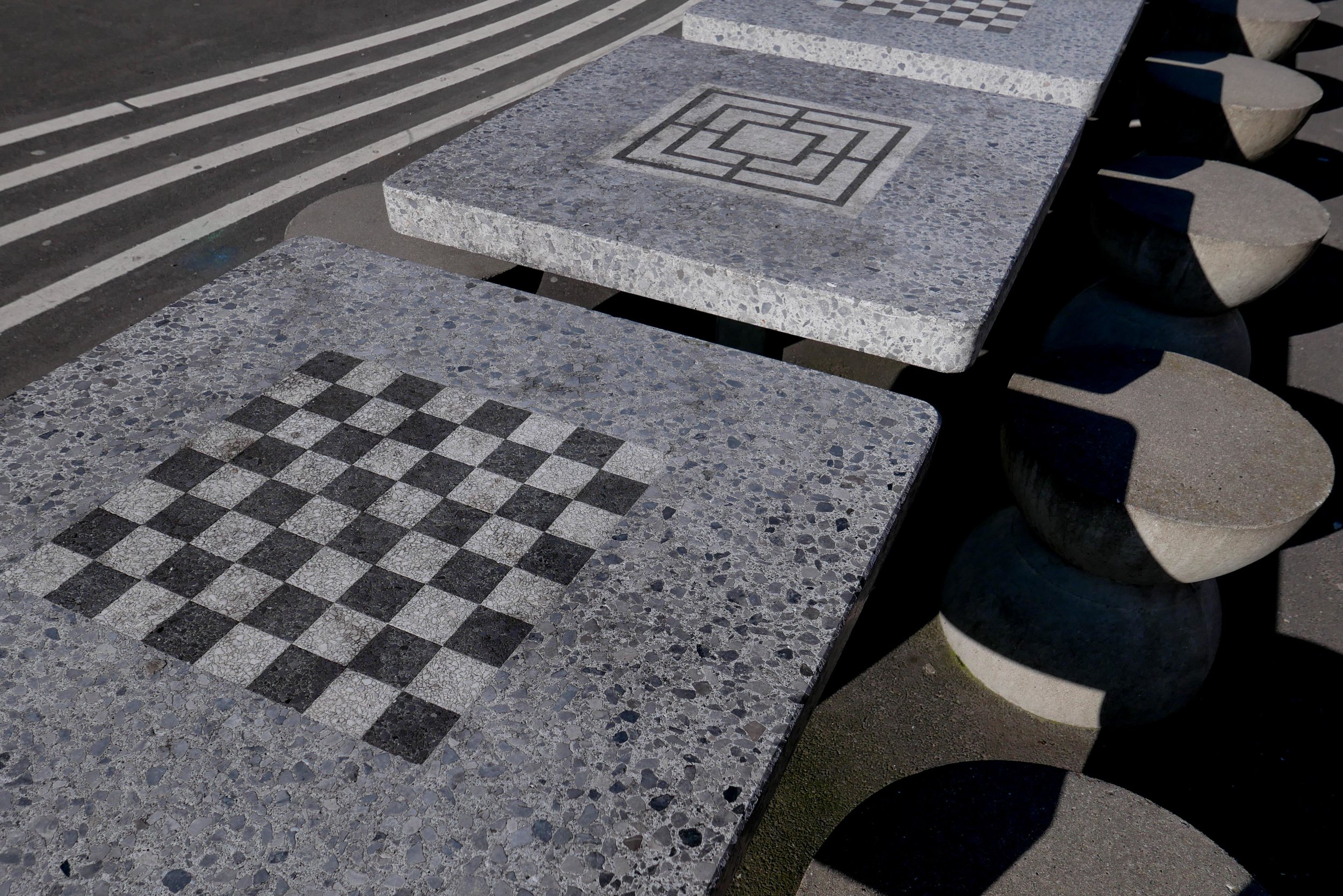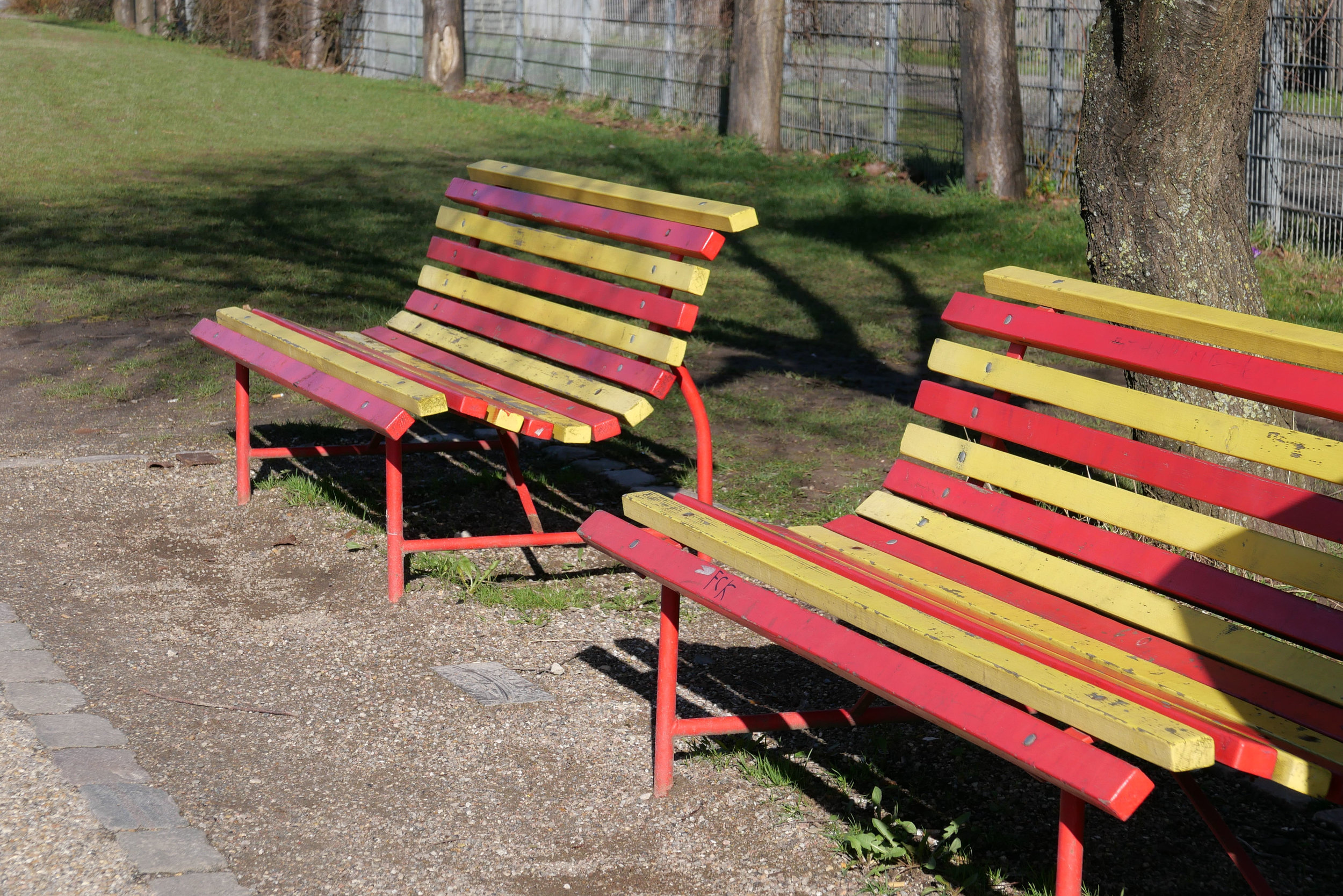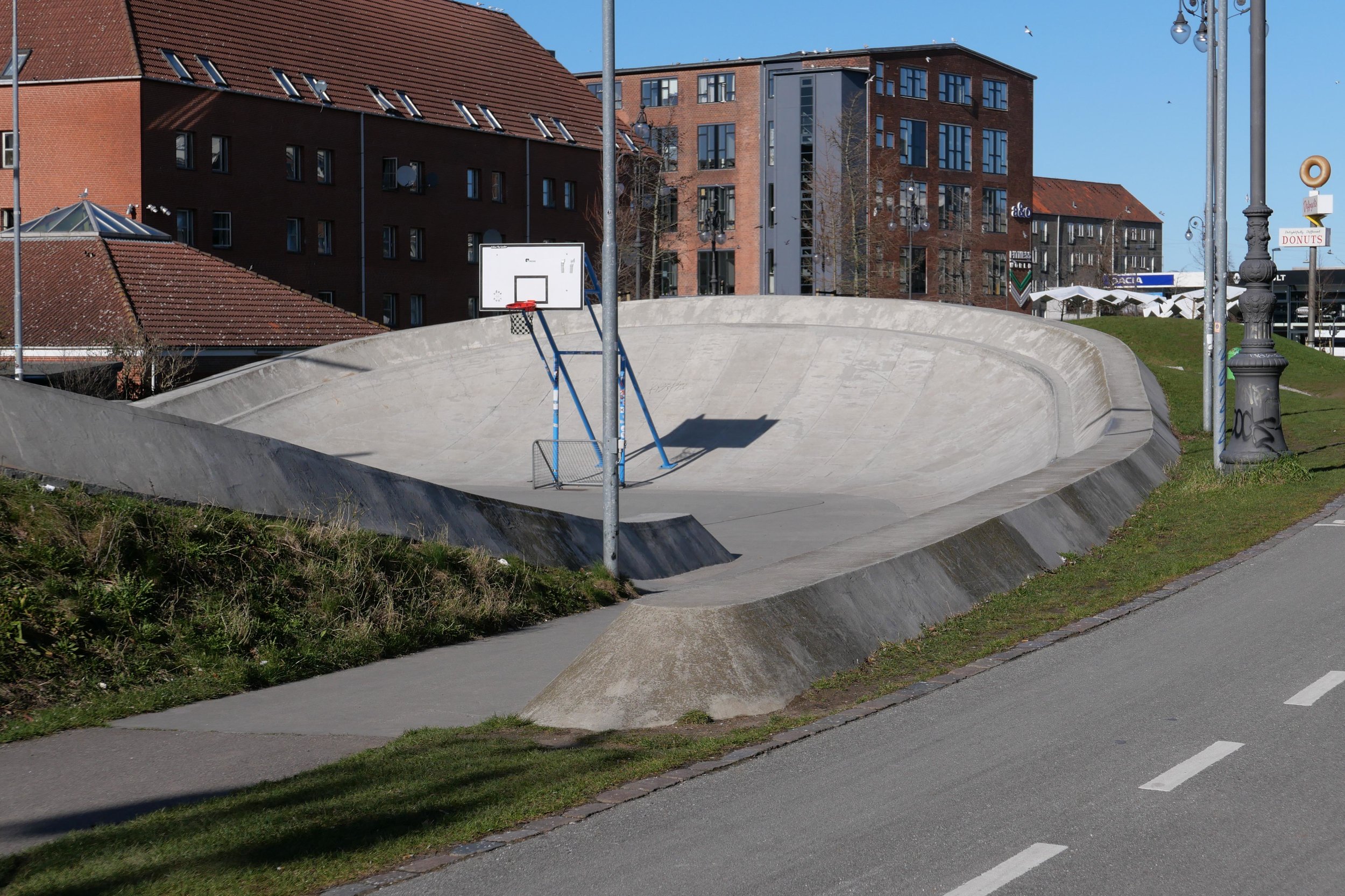Superkilen
/Life Between Buildings 4
Copenhagen has a number of linear parks of which the most ambitious is Superkilen in the district of Nørrebro just to the north of the city centre. The north section of the park forms a green wedge down from Tagensvej - a major road - and continues through to Nørrebrogade and then, across that main shopping street, the series of parks runs on to link with Nørrebroparken.
Superkilen or Super Wedge follows the route of an old railway that cut through the district which explains the long narrow site with much of it behind buildings. There is a mixture of architecture, including some good industrial buildings that have been adapted to new uses, and some apartment buildings look down on the space but, unlike a square or street, it is not enclosed or defined by building facades.
In strict architectural terms, the shape of the park seems odd and irregular with space leaking out so the opposite of Skydebanehaven or Shooting Gallery Park in the city that is enclosed by housing so that it is almost like a secret garden or secret playground owned by the community.
However, at Superkilen, if space leaks out, that means that the opposite or reverse is true, so spaces run into the park to draw local people in to make it a strong and important part of everyday life in the neighbourhood.
This area that has seen a number of public disturbances for a number of different reasons but having written about the recent publication of a new government policy for ghettoes in Denmark it seemed important to highlight the rejuvenation of this public space as a deliberate and very positive intervention by planners for social reasons.
Work started in 2010 and the park was completed in 2012. The team behind the design and its realisation was BIG, the architectural firm of Bjarke Ingels, with Toptek 1 and the Superflex group.
The park is 750 metres long and runs north from the main shopping street of Nørrebrogade with the entrance to the area just to the east of the railway station at Nørrebro, and it continues up to Tagensvej with just one road, Mimersgade, cutting across about a third of the way along. This is a local road and a clear and open crossing seems to work well with cars slowing down or stopping to respect cyclists and families going from one part of the park to the next.
At the south end, at the shopping street, the park is 85 metres wide, so open and inviting people in, but at parts it narrows down to 25 metres so there is a sense of spaces opening out and closing in so, deliberately, this is as far as possible from the idea of a regular and formal avenue.
The cycle route here is important and is well used with cyclists moving quite quickly but again there seems to be little conflict with families with small children using the play facilities here. This being Copenhagen, the awareness of bikes and the way pedestrians and cyclists coexist is clearly recognised … cyclists at other times are pedestrians and pedestrians at other times are cyclists and children learn to ride bikes from an early age so if there is not always a mutual respect at all times there is an almost instinctive understanding by one group of how the other group uses the space. The cycle route here is, actually, part of a much longer cycle route that runs from Valby in the south, up through Frederiksberg to Lyngbyvej in the north so it's a great green arc of almost 10 kilometres across the west and north side of the city.*
There are three distinct sections to Superkilen. The first, immediately north of the shopping street, is the Red Square with a distinctive red surface just replaced with red brick paving. On one side is Nørrebrohallen - now a major sport facility - so this part of the park is used for team sports and activities.
Just over Mimersgade, is Black Market with closely set but wavering and twisting lanes that are marked out with white lines, and then, beyond that, the largest area is a green park.
The cycle route runs with sweeping curves along the full length but footpaths, in some parts flanking the cycle route and in others breaking away, are deliberately less rigid to encourage people to move from one area to the next.
Perhaps the most distinctive feature of the park, and what has contributed to its fame, is the play equipment that varies from tables and seats marked out with board games to exercise equipment. This is an area with immigrant families who have come from a very wide range of countries and the community was consulted so fixed features and seating - some 108 features in all - reflect the ethnic diversity with designs inspired by things in home countries or physically sought out and imported to be set up here. These range from manhole covers from Zanzibar to a Donut sign from Rochester, Pennsylvania and a Monkey-puzzle tree from Chile.
Some of the features are for activity so climbing and areas to run and climb for kids (of all ages) who may be living in small and cramped apartments. There is much here that encourages people to stay and interact with other people in the community so there is are various seats, tables with board games, fixed barbecues for cooking a meal outside and a band stand and the success of this is clear as the area is well used.
There are community facilities along or close to the park and it is hardly surprising that art and design companies have been attracted to the area: JAJA Architects ** and Tredje Natur are here and their trial for climate-change paving at Heimdalsgade is just off the park on the east side in front of a popular café.
Bjarke Ingels Group
Superflex
Video on Louisiana Channel
108 objects and their history
notes:
* Superkilen will be part of a city-wide system with 110 kilometres of cycle routes across and round Copenhagen
** JaJa used the same striking red colour from Superkilen for the surface of the play area and exercise area they designed for the roof of P-Hus Lüders - a car park in Nordhavn


